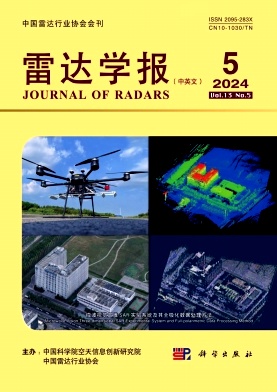基于NVIDIA GPU的CUDA机载SAR实时成像算法设计与实现
Q2 Physics and Astronomy
引用次数: 5
摘要
合成孔径雷达(SAR)图像处理需要大量的计算资源。传统上,该任务在工作站或基于中央处理单元(cpu)的服务器上运行,并且相当耗时,无法实时处理SAR数据。基于CUDA技术,提出了一种基于NVIDIA图形处理单元(GPU)的SAR成像算法的新方案。新方案使得数据处理过程和CPU/GPU数据交换可以并行执行,特别是当SAR数据的大小超过GPU全局内存的总大小时。新方案适当地支持多gpu,充分利用了所有的计算资源。在NVIDIA K20C和INTEL E5645上进行的实验表明,该方案将SAR数据处理速度提高了数十倍。因此,嵌入该方案的基于GPU的SAR处理系统具有更高的效率和可移植性,从而使其具有成为实时SAR数据处理系统的资格。实验结果表明,采用该方案后,K20C能够以每秒3600万像素的速度实时处理SAR数据。本文章由计算机程序翻译,如有差异,请以英文原文为准。
Airborne SAR Real-time Imaging Algorithm Design and Implementation with CUDA on NVIDIA GPU
Synthetic Aperture Radar (SAR) image processing requires a considerable amount of computational resources. Traditionally, this task runs on a workstation or a server based on Central Processing Units (CPUs) and is rather time-consuming, making real-time processing of SAR data impossible. Based on Compute Unified Device Architecture (CUDA) technology, a new plan for a SAR imaging algorithm operated on an NVIDIA Graphic Processing Unit (GPU) is proposed. The new proposal makes it possible for the data processing procedure and the CPU/GPU data exchange to execute concurrently, especially when the size of SAR data exceeds the total GPU global memory size. A multi-GPU is suitably supported by the new proposal, and all computational resources are fully exploited. It has been shown by an experiment on an NVIDIA K20C and INTEL E5645 that the proposed solution accelerates SAR data processing by tens of times. Consequently, a GPU based SAR processing system that embeds the proposed solution is much more efficient and portable, thereby making it qualified to be a real-time SAR data processing system. Experiments showed that SAR data can be processed in real-time at a rate of 36 megapixels per second by a K20C when the new solution is implemented.
求助全文
通过发布文献求助,成功后即可免费获取论文全文。
去求助
来源期刊

雷达学报
Physics and Astronomy-Instrumentation
CiteScore
4.10
自引率
0.00%
发文量
882
期刊介绍:
Journal of Radars was founded in 2012 by the Institute of Space and Astronautical Information Innovation of the Chinese Academy of Sciences (formerly the Institute of Electronics) and the China Radar Industry Association (CRIA), which is located in the high-end academic journal and academic exchange platform in the field of radar, and is committed to promoting and leading the scientific and technological development in the field of radar. The journal can publish Chinese papers and English papers, and is now a bimonthly journal.
Journal of Radars focuses on theory, originality and foresight, and its scope of coverage mainly includes: radar theory and system, radar signal and data processing technology, radar imaging technology, radar identification and application technology.
Journal of Radars has been included in domestic core journals and foreign Scopus, Ei and other databases, and was selected as ‘China's high-quality science and technology journals’, and ranked the first in the category of electronic technology and communication technology in the ‘Chinese Core Journals List (2023 Edition)’.
 求助内容:
求助内容: 应助结果提醒方式:
应助结果提醒方式:


